How To Call A Buck In Early Season
They say necessity is the mother of invention. I say desperation is the female parent of discovery.
Information technology was opening morning of Pennsylvania's archery deer season in late September many years ago. The leafage was thick and green, the humidity was loftier and the deer activity was tiresome.
I was sitting in a tree stand near sixty yards inside the forest, off the edge of an alfalfa field. A decent cadet and two does entered the woods from the field most 80 yards to my left, and they immediately turned to head away from me. If I did nil, I'd exist out of the game. And then I did something.
I grabbed past grunt call and gave a short toot. The buck stopped, looked my style, and then turned dorsum to follow the does. I grunted again. This fourth dimension, the buck curled around and walked straight toward me. I arrowed that 8-pointer when he stopped 10 paces from the base of operations of my tree. And just like that, I became a believer in early-flavor calling. Hither's a look at some killer calls for early on flavor whitetail.
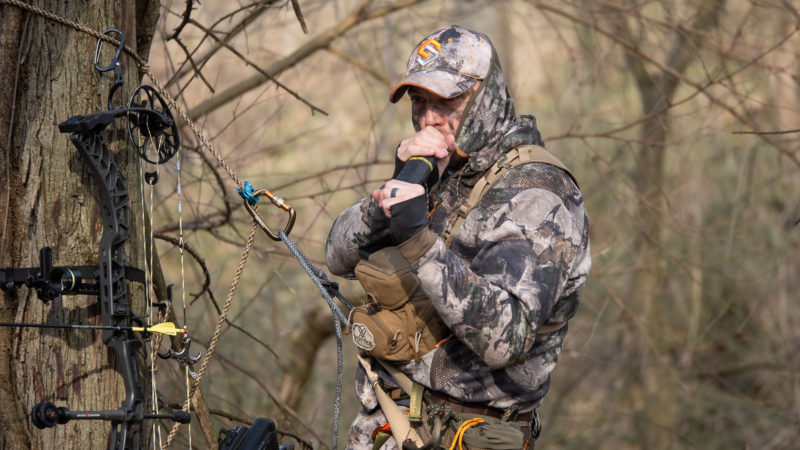
For the almost function, calling to bucks is considered a rut-time thing. By contrast, convention says the early flavour is a time for staying quiet, and relying on diligent scouting to exist in the correct identify at the right fourth dimension. Most whitetail hunters probably don't even carp carrying their calls into the field in September and early October. I say that'southward a error.
Whitetails are vocal creatures. Biologists at the University of Georgia in 1988 identified and recorded over 400 different deer vocalizations. And their inquiry noted that deer communicated with one another all year long – not merely during the rut.
One thing that tells u.s.a. about whitetails is they're social. They're also curious. E'er had ane stomp toward you lot in the wide open, with its neck craned and ears flared, while you stood motionless? Vocal, social and curious. That'south a recipe for calling success regardless of the species.
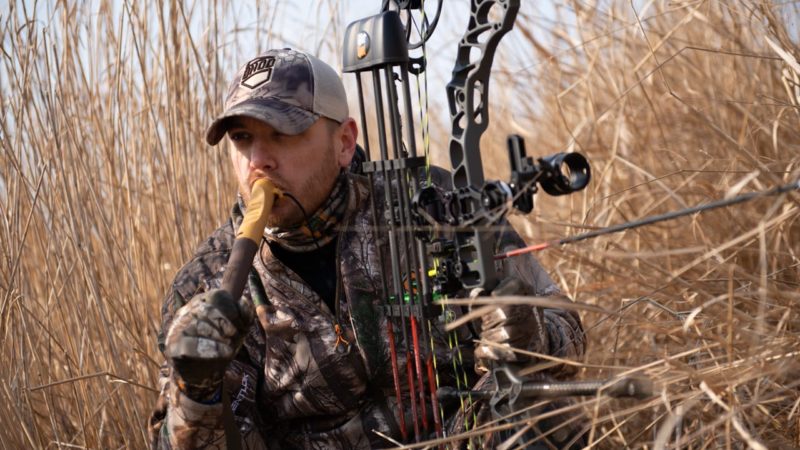
What Are They Maxim?
In the early flavor – late August through early on October across much of North America'southwhitetail country – you're probable to find deer in their late-summer feeding patterns. Does and fawns will be grouped together. Bucks that soon will try to impale each other volition hang out peacefully in bachelor bunches.
Does and fawns talk to one another with a series of bleats and grunts. Fawns are prone to making calls that sound similar a baby crying. These might be characterized as bawls or drawn-out bleats. The does besides volition bleat, although the pitch will be deeper, the volume lower and the duration shorter than the bleat of a fawn. This is not the estrus bleat you'll hear later on when its fourth dimension to brood. It'southward a call does make to gather their fawns.
Does also grunt. Quite a scrap, in fact. It's a depression-pitched noise they use to maintain contact with their fawns and other does. It actually sounds a lot similar the grunts bucks make exterior the rutting period. Soft and short is the best mode to describe information technology.
Buck grunts in the early season are noticeably missing the aggression that will characterize their vocalizations several weeks later. Think of it as bucks communicating in a civil tone, versus the trash talk that will have over when they first fighting over the ladies.
Calls For The Fourth dimension
Many of the deer calls on the market today are built primarily for the heat ‑ doe estrus bleats, buck snort-wheeze, magnum roar calls, etc. You lot don't want to use those calls during the early season. Subtlety is the rule this time of year.
For cadet calls, examination a bunch of different models to find one that has a little higher pitch than the standard heat grunter. There are several models that feature a sliding O-band on the reed, which allows yous to accommodate the tone and pitch. Those are great for early on-season calling. So are calls that have accordion-style finish tubes, which y'all can shorten and elongate to change the pitch.
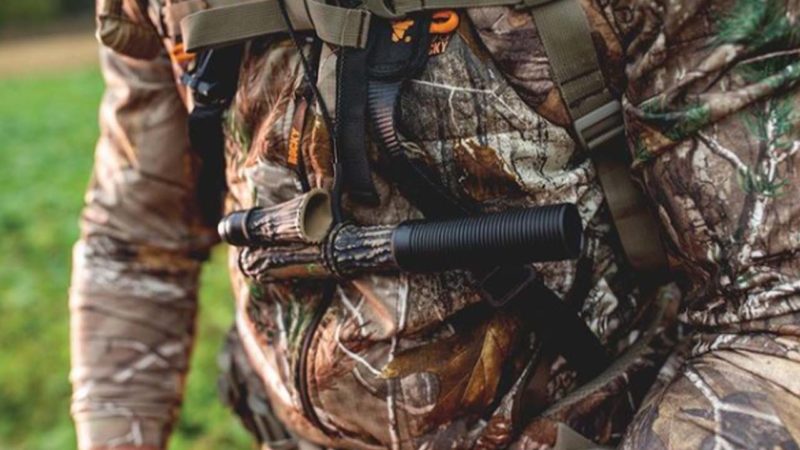
Aside from the calls that brand estrus bleats, pretty much any doe call will practice for the early season. Y'all want to be able to brand soft grunts and bleats, just like a doe communicating with her fawns and other does.
Fawn-bleat calls are a good choice too. Both are corking for luring does into bow range, but they can besides bring in a buck looking for company.
Talk The Talk
A main difference between calling to bucks in the early season, as opposed to the rut, is you're trying to pique a buck's curiosity. Later on, yous're trying to claiming that cadet. During the estrus, you lot're probably used to long, drawn-out grunts, or the tending grunts ‑ a series of fast burps that imitate the sounds a buck makes when it's trailing a hot doe.
Early-season grunts are far more subtle. To our ears, early season grunts are tough to hear unless the cadet is right under your stand up. To imitate that call, give a unmarried soft, very brusque "burp." Look a few seconds, so do it over again.
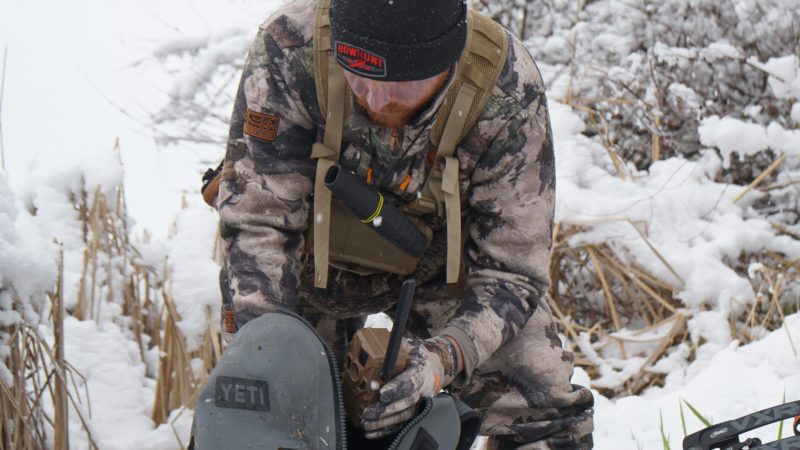
The advantage in the early on flavour is the vegetation is thicker, so an approaching buck can't run into equally well through the timber. Y'all desire to fool a cadet into thinking i of his buddies is subconscious in the expanse, inviting him to come join the political party.
If you've hunted much during the early season, you know the timber is total of doe bleats and grunts. I don't know if it's because there hasn't been much hunting pressure, or if information technology's because does are then busy communicating with their fawns, but does are very talkative in the early flavour. Fifty-fifty though bucks are in their bachelor groups, doe chatter will sometimes cause them to come up over. Call back, they're curious and social.
What about rattling? Well, if you lot're hunting early on plenty that almost bucks are still in velvet, then I'd leave the rattle pack in your pack. Simply if in that location are some hard-horned bucks running around, by all ways, do a little tickling.
Bucks – especially young ones – will start playful sparring as soon as they shed their velvet. It's just going to be light sparring, though, and then all you want to do is brand a noise to imitate the audio of tines tickling together.
Don't Be A Spectator
Large, mature bucks tin can become ghosts once they suspension out of their tardily-summertime feeding patterns and go into pre-estrus manner. If you have an early-flavour see with a big buck, yous might want to effort calling to him earlier he disappears. At worst, he ignores you and you lot have to come up upward with another plan to tag him. At best, you collect some fine venison for the tabular array and a big rack for the wall.
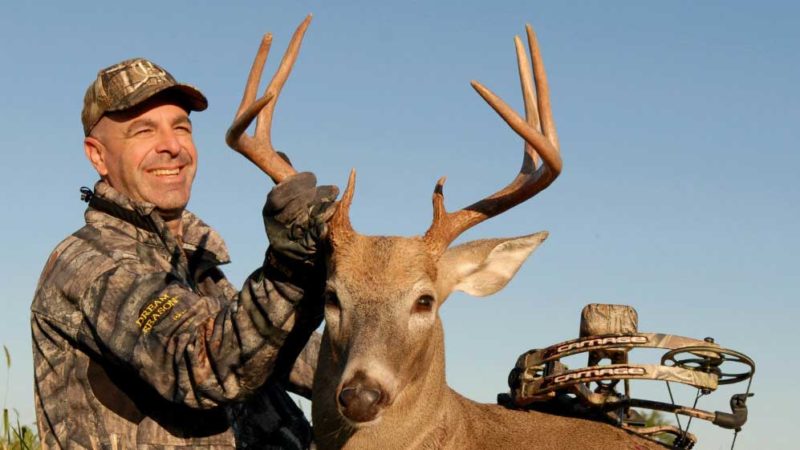
Source: https://www.bowhunting.com/blog/2015/09/06/killer-calls-for-early-season-whitetail/

0 Response to "How To Call A Buck In Early Season"
Post a Comment